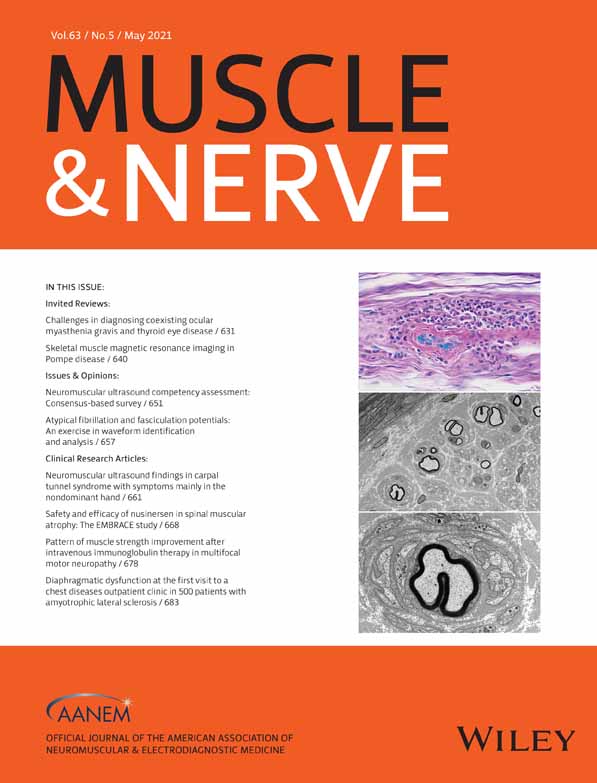Prolonged median distal sensory nerve action potential duration in carpal tunnel syndrome
Jie Yang and Ke Chen contributed equally to this study.
Abstract
Objective
Routine nerve conduction study (NCS) parameters are less sensitive in the early stage of carpal tunnel syndrome (CTS). Recently, some studies have shown that prolonged distal sensory nerve action potential (DSNAP) duration may be a more sensitive technique for the diagnosis of demyelinating peripheral neuropathies. We aimed to evaluate the sensitivity of median DSNAP duration in patients with CTS.
Methods
DSNAP duration and routine NCS data of the median nerve were retrospectively collected in 173 CTS patients, 73 controls, and 78 cervical radiculopathy patients.
Results
Prolonged median DSNAP durations were found in 22 patients (22/35, 63%) and 36 patients (36/54, 67%) in the minimal and mild CTS groups respectively, which was more sensitive than routine NCS parameters. The percentage of patients demonstrating abnormalities in median NCS was significantly increased from 80% to 92% with the addition of DSNAP duration.
Conclusion
Our results demonstrate the electrodiagnostic value of median DSNAP duration for the diagnosis of CTS, especially in early cases.
CONFLICT OF INTEREST
The authors declare that they have no competing financial interests.
Open Research
DATA AVAILABILITY STATEMENT
The data that support the findings of this study are available from the corresponding author upon reasonable request.




